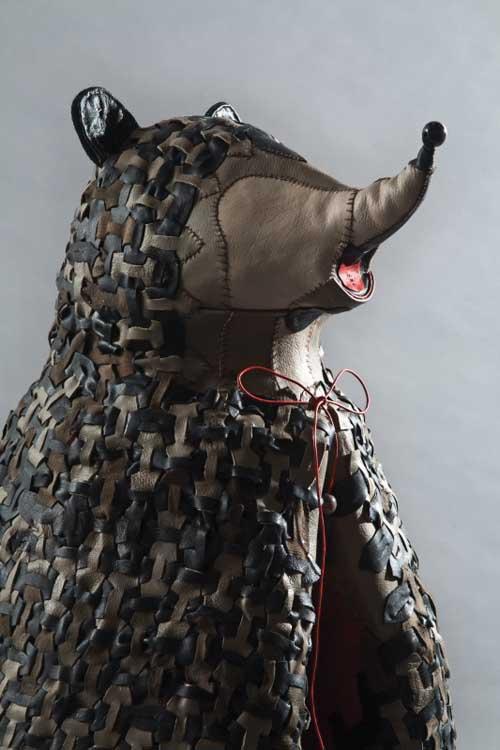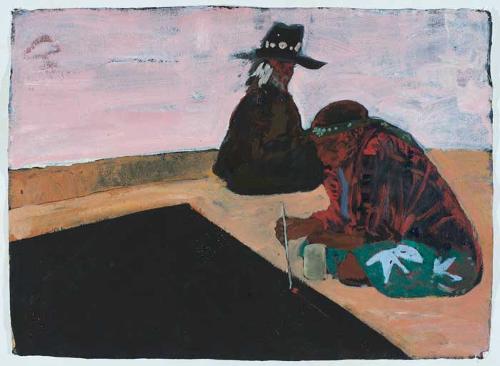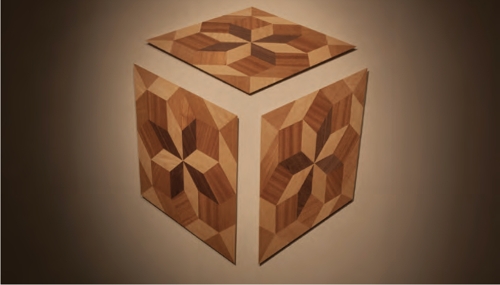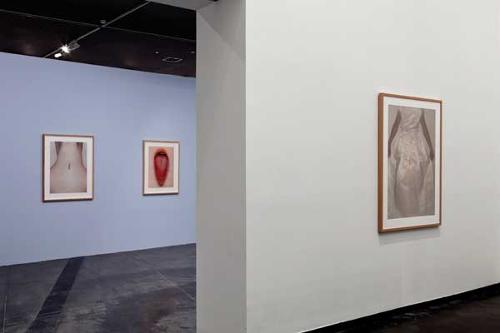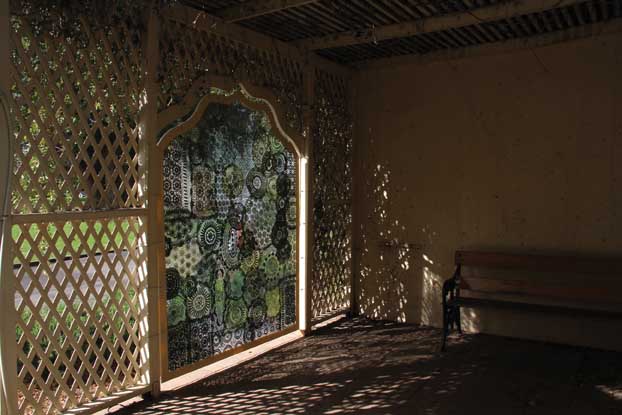
Conversations in ellipsis began some years ago as a kind of tête-à-tête between artist Kaylie Weir and curator Lisa Harms. Here, it comes together as an extended complex layering of ideas, materials and places described by Harms as "material conversations", where conversations pick up exactly where they left off, as perhaps, the talk made active. These conversations extend beyond Harms and Weir, to the seven other participating artists: Morgan Allender, Sally Arnold, Nic Brown, Cathy Frawley, Sasha Grbich, Elizabeth Hetzel and Alessandra Tomeo. Conversations in ellipsis connects the work of these Adelaide artists across three sites: SASA Gallery, Adelaide Botanic Garden and FELTspace, while co-existing online and in poetry by Lisa Gorton.
In the catalogue Melbourne-based poet Gorton relates our experience of the three physical sites to three different and interchangeable domestic interiors: a bedroom, a hallway and a living room. This connection with time and space, and our experience of it has been carefully articulated in the art and writing that make up this exhibition. Deeply personal, unforgettable, fragile, sometimes threatening allegories explore the shared sensation that “we will never live in it [a room] as fully as it lives in us”.
Beginning at SASA Gallery, Weir's Somersault, a Jacob’s ladder (toy), is laid out along the window ledge, visible from both outside and inside the space. It reveals a series of nude self-portraits painted on each block and is held together with ribbon scribed with disjointed text. Responding to Weir’s object, Harms’ installation of perspex sheets printed with images of mountainous piles of clothing echoes similar anxieties in everyday life, where even the ironing becomes an all-consuming endeavour. Around the corner, Tomeo’s Memory Objects of jewels scattered across the cold concrete floor, speak of memories lost and found. The works both spill out and leak into the SASA Gallery, connecting the external with the internal, integrating with the bustle of Hindley Street they could easily go missing.
Welcoming the viewer into her boudoir is Brown’s beautiful Monte Carlo mountains - miniature landscape paintings on crystal bowls. Each horizon line matches up and the light catches the cut-crystal reflecting and refracting light and shadow, drawing a lineage down the eastern wall. Domestic furniture items sit throughout the gallery framing and compartmentalising the room, in physical representations of a story with a Beginning, Middle and End. A wardrobe, dining table, armchair, lamp, trophy cabinet and side table act as surfaces for the presentation of artworks.
Breaking away from gallery convention the second (Middle) site, the Adelaide Botanic Gardens was launched with a Sunday afternoon picnic. This out-of-gallery viewing experience is a more fully formed juxtaposing of domesticity with nature. Weir’s Plethora canvas paintings and Brown’s breeding doily installations successfully capture the inquisitiveness of the passerby. Weir’s depiction of everyday objects; a child’s lost shoe, yesterday’s top, a cast aside sheet and a hat left behind, are all celebrated in tiny canvas paintings (about the size of a human palm). Each hung from the fig trees that line the Ficus Walk, just out of reach, with their realistic detail almost out of sight. These are humble objects shown in unassuming surroundings. Weir’s portrayal of domesticity speaks to Allender’s still-life paintings of nature displayed in SASA Gallery – domesticity in nature, nature in domesticity – one inside the other.
Likewise, Brown’s In the forest, watching the mountain and Doily forest are intrinsically connected to her body of work in SASA Gallery. Well-conceived and fully realised the crocheted (found) doilies feel at home in the Gardens. Doily forest spreads throughout the Australian Forest, draped over branches as if accessorising nature. Not necessary but effective and beautiful all the same.
Ending this story at FELTspace, Arnold’s charming paintings of swans, flowers and waterfalls are framed in blackness, mirroring the sober mood of Frawley, Allender and Weir’s paintings in the other venues. The large unfinished works are presented on brown paper rolls that gravitate to the floor, collecting the remaining roll as if “dropping anchor”.
Grbich’s Handmade Disaster (deluge) calls the viewer into the backroom of FELTspace where wires snake across the floor, coiling around the base of glasses, vases and champagne flutes. Propped inside the mouth of these vessels, small speakers play 1-15 minute loops of the sound of rain falling. This work has one of the biggest voices in this conversation, saying much with very little. It sensitively references the Queensland floods and the real-life threats of natural disaster, while still retaining the magical experience of listening to rain in the safety and warmth of your home.
This generative exhibition positions itself as a forerunner for further dialogue. Whether these conversations will be conceived in public or private locales, there is no doubt they will continue – to pick up exactly where they left off.

